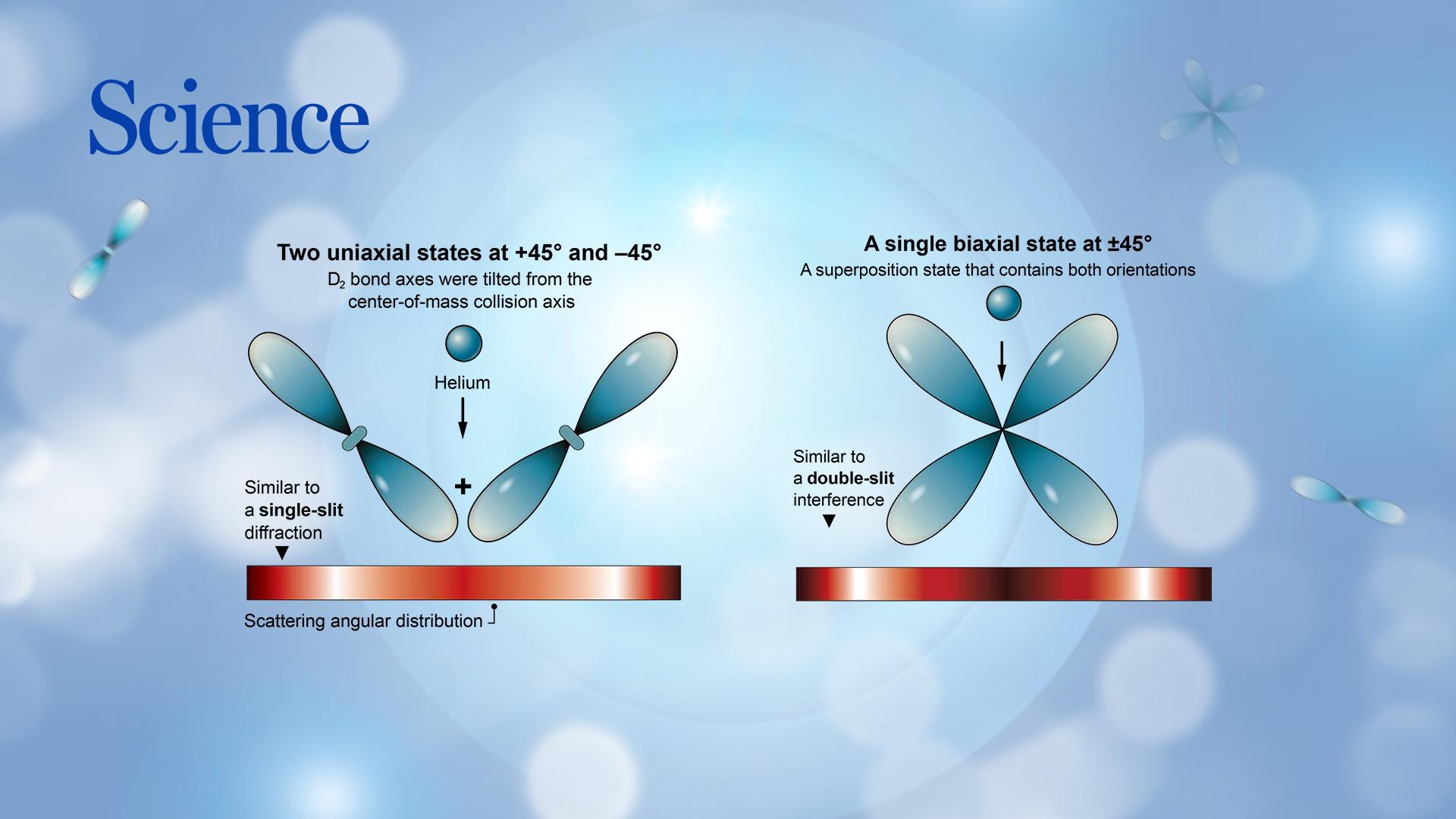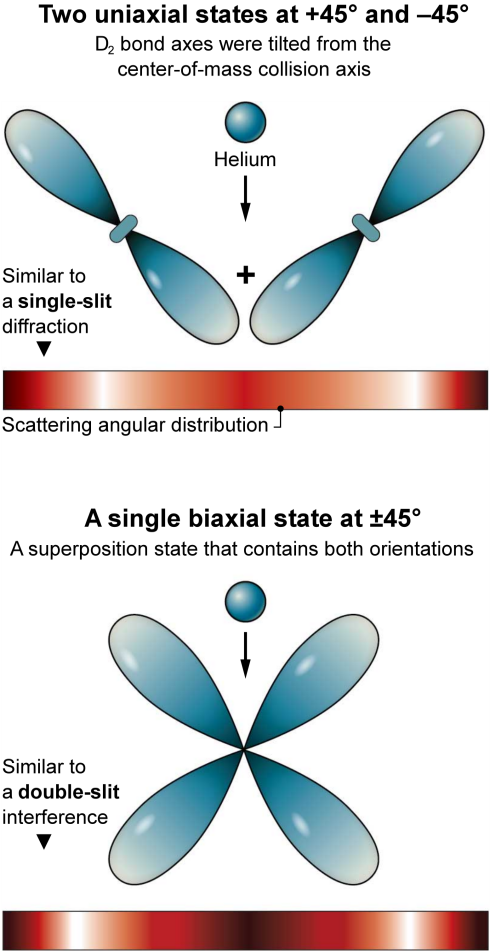As the wave-particle duality has been demonstrated in countless experiments for almost a century, scientists are still grappling with how to predict the effects of wave-like interference in more sophisticated systems, such as those involving the nonbinding interactions between atoms and molecules known as steric effects.
Chair Professor Xueming Yang in the Department of Chemistry at the Southern University of Science and Technology (SUSTech) and Professor Xingan Wang at the University of Science and Technology of China (USTC) were invited to write a perceptive on stereodynamics and quantum interference phenomena in molecular collisions.
This perspective article, entitled “A molecular double-slit experiment,” was published on Science, one of the world’s top academic and high-impact journals. This article detailed the work published on the same issue about the observations of a low-energy inelastic bimolecular collision between sterically controlled deuterium molecules (D2) and helium atoms (He).

In 1801, Thomas Young, an English mathematician and physicist, demonstrated the wave nature of light in the double-slit experiment, marking a milestone in the history of science. This false dichotomous understanding of light would continue until 1927, when Clinton Davisson and Lester Germer showed the possibility of wave-particle duality through electrons, ushering in perhaps the most important discovery in quantum mechanics.
The behavior of microscopic collisions between atoms and molecules is governed by quantum mechanics. For example, quantum interference significantly affects the microscopic dynamics of energy transfer and chemical reactions caused by molecular collisions. Therefore, the accurate measurement and description of quantum effects in molecular collisions is the key to understanding the quantum molecular dynamics.
With the development of many sophisticated experimental techniques such as lasers and molecular beams, scientists have been able to fine-tune the quantum state and spatial orientation of colliding molecules, making it possible to study the microscopic stereodynamics in molecular collisions.
The American scientists, Zhou et al., present observations of a low-energy inelastic bimolecular collision between sterically controlled deuterium molecules (D2) and helium atoms (He).
Using an experimental setup that enabled the investigation to be performed under single-collision conditions, they measured the inelastic rotational energy transfer process between D2 and He. When preparing the D2 molecules for the uniaxial states, the bond axes of the molecules were tilted to +45° or −45° from the center-of-mass collision axis. However, when preparing the molecules for the biaxial state, the bond axis of the biaxial state molecules becomes a superposition of both +45° and −45° (Figure 1).
In quantum mechanical terms, the scattering of the biaxial state should have two indistinguishable collision pathways that interact with each other through quantum interference. The authors observed a clear difference between the inelastic scattering angular distribution of the biaxial state compared with the two uniaxial states.

Figure 1. Double-slit interference pattern observed in molecular collision
D2 were set in the uniaxial and the biaxial states before being sent on their way to collide with He atoms. The biaxial D2, represented by the superposition of the two uniaxial states, showed a noticeably different scattering pattern from the uniaxial D2, thus demonstrating the presence of strong quantum interference in the biaxial D2 during the collision with He.
This direct comparison of the distinct scattering pattern demonstrated substantial quantum interference between the biaxial D2 molecules and the He atoms during their collision. In all, the experiment provides an elegant realization of quantum interference in molecular collision processes.
Besides the originality of observing quantum interference in an exotic system, the study of the quantum dynamics in atomic and molecular collisions with aligned or oriented molecules also advances the understanding of molecular energy transfer and reaction dynamics. In recent years, various quantum interference phenomena in inelastic and reactive collisions have been reported. This paper also detailed the quantum interference in the forward scattering direction of the H + HD→H2 + D reactive collision, with the relationship between quantum interference of quantized transition states analogous to the slits in a double-slit experiment.
The H + HD →H2 + D reaction exhibited quantum interference at collision energy near the well-known conical intersection during scattering. A conical intersection between two adjacent electronic states in the potential energy surface creates two distinctive topological reaction pathways. The two reaction pathways, clockwise and counterclockwise, around the conical intersection could act as a double slit in the chemical reaction. One corresponds to the direct reaction, and the other corresponds to a roaming-like pathway. Interferences between the two distinctive topological reaction pathways play a key role in unraveling the geometric phase effect in this benchmark chemical reaction.
On May 15, 2020, the research progress of Prof. Yang’s team in this regard was also published in Science, entitled “Quantum interference in H + HD → H2 + D between direct abstraction and roaming insertion pathways”.
Prof. Xueming Yang and Prof. Xingan Wang are the corresponding authors of this paper.
This work was supported by the National Natural Science Foundation of China (NSFC), the Chinese Academy of Sciences (CAS), the Guangdong Science and Technology Program, and the Shenzhen Science and Technology Program.
Paper links:
Science (November 2021): https://www.science.org/doi/10.1126/science.abm5536
Science (May 2020): https://www.science.org/doi/full/10.1126/science.abb1564
To read all stories about SUSTech science, subscribe to the monthly SUSTech Newsletter.
Proofread ByAdrian Cremin, Yingying XIA
Photo By